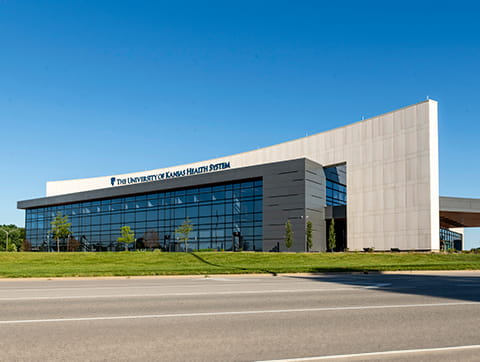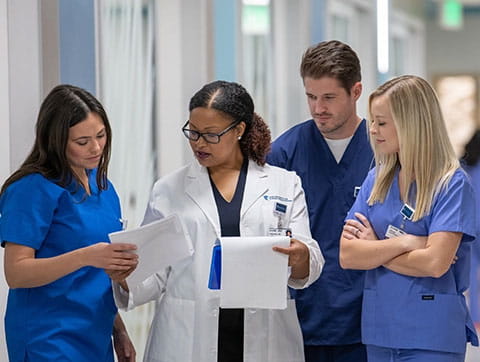- Home
- Conditions and Care
- Treatments
- Sleep Apnea Surgery
- Inspire Therapy
Sleep Apnea Surgery
Inspire Therapy
An estimated 18 million Americans live with sleep apnea, often using a continuous positive airway pressure (CPAP) machine to get a better night's sleep. But now there's a new approach for treating sleep apnea – Inspire therapy. This implantable device monitors your breath while you sleep at night to ensure your airways remain open.
The University of Kansas Health System continues to be one of the top 5 hospitals in the nation that offers Inspire sleep apnea treatment. Our team collaborates with registered polysomnographic technologists who perform sophisticated sleep studies to help doctors provide the best care.
What is the Inspire sleep apnea device?
The Inspire device is a surgical implant that monitors your breathing while you sleep and opens your airway. Inspire sleep apnea treatment is for those with moderate sleep apnea who are 18 years or older and fall within the Body Mass Index (BMI) range for their height and weight. BMI measures body fat based on height compared to weight. A normal BMI range is 18.5 to 24.9.
We offer a variety of appointment types. Learn more or call 913-588-1227 to schedule now.
Who can have Inspire sleep apnea treatment?
Inspire therapy is an implantable treatment option for people with obstructive sleep apnea who are unable to use or get consistent benefit from continuous positive airway pressure. You might be a candidate for Inspire therapy if:
- You have moderate to severe obstructive sleep apnea with an apnea-hypopnea index of 20-65
- You are unable to use or get consistent benefit from CPAP
- You are not significantly overweight
- You are 18 years old or older
An Inspire therapy-trained doctor will also evaluate your overall health status and perform a physical examination of your airway to determine if Inspire therapy might be a suitable CPAP alternative for you.
How does the Inspire sleep apnea device work?
Based on your unique breathing patterns, the Inspire system delivers mild stimulation to the hypoglossal nerve, which controls the movement of your tongue and other key airway muscles. By stimulating these muscles, the airway remains open during sleep. Inspire is controlled by a small handheld remote. The remote allows you to turn Inspire therapy on before bed and off when you wake up, adjust stimulation strength and pause during the night if needed.
Benefits and risks of the Inspire device
Data indicate that the Inspire device reduces sleep apnea by an average of 79% and significantly reduces snoring and daytime sleepiness. In addition to daytime tiredness and irritability, people with sleep apnea are at higher risk for stroke, type 2 diabetes, metabolic syndrome and liver problems. Other complications of sleep apnea can include memory problems, mood disorders, heart attacks and heart rhythm disorders.
Once you have Inspire therapy, you may still be able to have an MRI. It is best to discuss your options with your doctor if an MRI is suggested. Alternative imaging technologies such as CT, ultrasound or others may be most suitable for you.
What happens during Inspire sleep apnea treatment?
Those who qualify for Inspire will require a minor outpatient procedure. The physician implants the small nerve stimulator device and battery pack under the skin in the chest. One electronic lead, or wire, connects the device to the nerve that stimulates the tongue. The other lead connects to a space in the ribs near the diaphragm. Once connected, the device monitors the patient's breathing. The device sends an impulse to the tongue during every breath while sleeping, keeping the airway open for oxygen.
After the procedure, it takes about 30 days to heal. You will then return to your physician, who activates the device. Once activated, you can use a handheld remote control device to turn Inspire on before you go to sleep each night. You are also able to pause the device if needed and turn it off in the morning. The battery pack is designed to last 7-10 years, much like a pacemaker.

Still the best
Our hospital continues to rank as the best in Kansas City and in Kansas according to U.S. News & World Report.

Magnet-recognized
The University of Kansas Hospital has been designated a Magnet® facility by the American Nurses Credentialing Center since 2006. 
Respect for all people
Named a leader in LGBTQ+ Healthcare Equality by the Human Rights Campaign. 



